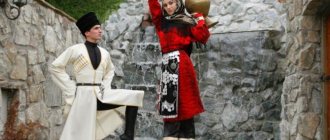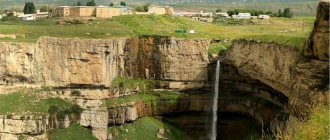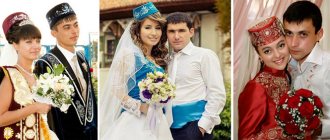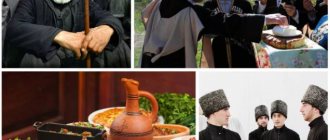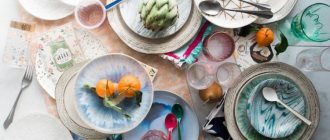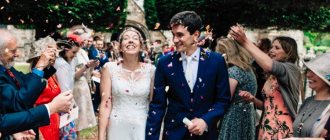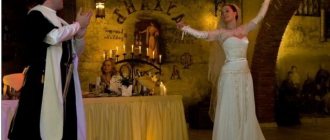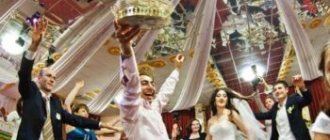Wine is the main pride of Moldova
The first thing that comes to mind when mentioning Moldova is excellent wine and endless vineyards. Even looking at a map of the country, you can see the outlines of a bunch of grapes. Here the Wine Festival at the beginning of October is a national celebration.
On this day, which is held under the patronage of the president himself, folk festivities take place. People sing, dance, watch performances of folk groups, have fun and, of course, drink wine with amazing taste.
A beautiful ancient legend is associated with grapes and storks (another one of the symbols of Moldova). When the Turkish Janissaries tried to conquer the Gorodeshty fortress, the defenders of the homeland fought to the death. Strength was running out, provisions and water were running out, but the proud Moldovans fought to the last. And suddenly white storks appeared in the sky, they were visible and invisible, and each one carried a bunch of grapes in its beak.
The surprised conquerors froze, and the warriors - the defenders of the fortress - got enough of the grapes and continued the battle with redoubled force. The fortress was defended, and the white-winged stork with a bunch of grapes in its beak became a symbol of freedom and happiness.
Moldova is an agricultural country, here every farmstead has its own vineyard and cellar for storing wine. Cultivating vineyards and making wine is both a source of income and a tradition preserved over many centuries. Feteasca Alba, Feteasca Regale, Rare Neagra are the most famous varieties of wine that the country produces for export.
Song and dance traditions of Moldova
Doinas and Kolindas are Moldovan folk songs, unusually beautiful and melodic, and are still used in folk rituals - weddings, Epiphany, Christmas and many others. The lyricism and fluidity of doina are especially expressed in female and ensemble singing. Initially, they were the melodies of shepherdesses; later they were reborn into one of the symbols of national culture.
The fiery Moldovan folk dances - jok, moldovenyaska, hora - are known to everyone. In Soviet times, the dance group “Zhok” shone on world stages. Nowadays you can admire folk dances at national holidays and art festivals.
Evgeniy Doga , a Soviet composer, author of the beautiful “Waltz” from the film “My Affectionate and Tender Beast” , is inextricably linked with Moldova . Moldavian singer Nadezhda Chepraga, a popular performer of pop and national songs in her time, was brought up on folk tunes and unique traditions of song culture.
The song and dance rituals of the Moldovans are carefully and lovingly preserved as the greatest value. You can still see them, for example, at wedding celebrations.
Folk music creates a joyful, uplifting mood. Both newlyweds, parents, and guests enjoy singing and dancing to music played on folk instruments (fluer, nai, cymbals, kobza).
Moldavian traditions and customs
View Comments
The traditions and customs of the inhabitants of the Moldavian land, rooted deep in the past, are sacredly preserved and passed on from generation to generation.
Hospitality is a distinctive feature of the Moldovan people. It is customary to greet guests with bread and salt and a glass of good wine.
Each village in Moldova honors a certain saint who is their patron, and in this regard they celebrate the Temple of the village/town.
On this day, all houses are cleaned and tables are set.
Housewives prepare delicious dishes: sirmelutse moldovenesti (stuffed cabbage rolls), cırnacei, mititei, vertutı, placinda, hominy, feta cheese and many others.
Moldavian cuisine
Mititei
Hominy
The owner takes out his best wines from the cellar and treats his family and friends.
In the national game trynte, the strongest person is determined and receives the main prize - a ram. What unites everyone in the choir is a collective dance.
The capital Chisinau celebrates its birthday on the Intercession of the Mother of God - October 14.
Celebrations of Chisinau City Day - October 14
In the morning, services are held in all churches, and then celebrations are held on the streets of the city.
On these same days - the second Sunday of October - the national tradition of celebrating Wine Day is officially legalized in Moldova.
National Wine Day is the main holiday in Moldova
Winemakers from all over the country come to the central square to offer their young wine, and the best one is determined at a competition.
Guests from many countries around the world come to participate in this holiday.
Autumn in Moldova is rich not only in harvests, but also in weddings. Many newlyweds prefer to start families at this time of year.
The customs of a Moldovan wedding are aimed at creating a strong family; for this purpose, the newlyweds choose married parents - Nanash and Nanashka, for whom they become Finns. In the future, our nanashi are mentors to the young family, and they, in turn, must listen to their advice, visit them, and congratulate them on the holidays.
Moldavian wedding
The ritual of giving gifts to newlyweds, according to folk tradition, is called Masa Mare (Big Table). Each guest publicly announces his gift with congratulations and wishes. The imprisoned parents set an example and, as a rule, give the most significant gift.
With the birth of a child - Moldova is mainly an Orthodox country - he is baptized, choosing godparents and celebrating kumetria (christening). All godmothers, and there can be up to 50 people, receive rolls from their parents and, in turn, give gifts to the baby.
Moldavian kumetria (christening)
Since ancient times, all Moldovans have been united by the Martisor holiday, which is celebrated with the arrival of spring - March 1st. Everyone, young and old, gives each other handmade red and white jewelry in the form of two woven threads with flowers at the end.
National holiday Martisor - March 1
Martisor is worn for a month, attached to clothing, on the left side of the chest. At the end of the month, they take it off, make a wish and hang it on a tree.
The Moldovan people added their own flavor to the national holidays celebrated in many countries around the world. So on the first day of the New Year, it is customary to scatter grain in houses as a symbol of the future rich harvest;
At Christmas, children go from house to house, sing carols, wishing them peace and prosperity, and receive sweets in return.
All relatives are united by Memorial Day, which is celebrated a week after Easter. Families gather in the parental home, visit the graves of relatives and friends and remember the deceased, honoring their memory.
Celebrating Easter in Moldova
Folk dances and music
It is impossible to talk about the culture of a country without mentioning music and dance.
Both are characterized by their contagiousness in Moldova. The famous dance of the choir does not leave outside observers - when the music plays, everyone, without exception, begins to move briskly in a circle holding hands. Traditional musical instruments - nai, dulcimer, fluer, chimpoy, kobza, toba - are difficult to confuse with others; their sound has a special character, a special southern temperament. The rhythm of Moldavian folk music is usually fast and cheerful, but there are also sad motives. For example, doina is a lyrical song from which all Moldavian melodies are believed to originate. This means that already hundreds of years before our era, traditions and customs began to appear that have survived to this day.
This morning it became known that the wolf escaped from the premises in which he was locked yesterday. In this regard, the mayor of the locality appealed to the villagers to be careful until the animal is caught again.
Moldavian national costume
The national Moldavian costume is a vivid example of the unique creativity of folk craftsmen, an example of ancient customs, evidence of the deep interaction of the Moldavian ethnic group with neighboring peoples.
Not so long ago, every craftswoman was obliged to make her own outfit. Moreover, copying the intricacies and patterns was not allowed. By the nature of the pattern, color scheme, and characteristics of the cover, one could judge the social status of the girl and the inclinations of her character. A prerequisite was the harmony of the costume with the overall appearance - the color of the eyes, hair, and headdress.
Natural fabrics have traditionally been used as materials for the production of canvases: wool, linen, hemp, cotton.
The material of the costume reflected the well-being of the family. Moldovans of modest means used hemp fabric, while more prosperous ones used linen or cotton, which was much more delicate than hemp. Moreover, the canvases themselves were often made at home. Silk was also used to make towels that women used to cover their heads.
The decorations of the Moldavian costume were directly related to the area in which these people lived. Soil fertility, mild climate, rich harvests - everything was reflected in embroidery and patterns on fabric. The pattern in the form of leaves, flowers, bunches of grapes combined with a geometric embroidery pattern created a unique flavor of the Moldavian national costume.
The composition of the women's national costume traditionally includes the following components: headdress, outerwear, shoes, jewelry and accessories, which change depending on the conditions.
Visit Moldova
Customs in Moldova are folklore colorful actions that have a deep ritual meaning that conveys a person’s attitude to nature and the world around him. These unwritten rules of humane and kind behavior are passed down orally from generation to generation.
Currently, Moldovan traditions, combining spectacular ceremonies and exciting ancient rituals, are attracting more and more attention from researchers and tourists from all over the world.
back to top
Martisor Holiday
The spring holiday of Martisor is considered one of the most beautiful traditions in Moldova. It is celebrated on the first day of spring and is also associated with a folk legend. Spring, coming into its own, cleared the ground of snow to help the first flower, the snowdrop, emerge. Winter, not wanting to give way, got angry and launched a blizzard on the beautiful Spring. She, protecting a snowdrop from the wind, scratched herself on the thorns of a thorn tree. Drops of blood fell on the snow.
The symbol of the holiday is considered to be decorations woven from red and white threads - martisors. Residents of Moldova give them to each other in honor of the onset of spring. These delicate decorations are worn for a whole month, and at the end of March they are hung on trees in the forest, while making cherished wishes. It is believed that they always come true.
What do you know about the languages spoken in Moldova?
In Moldova, language is often a bargaining chip in politics and the subject of fierce debate. Although this is an integral part of any culture. This test will help you test yourself, how well you understand the linguistic situation in Moldova and what you know about international language practices, in which language is not a reason to quarrel, but vice versa.
Test: Watch your tongue?
NM also offers to learn more about the official language of Moldova. The material is about how the modern Romanian language developed, whether there is any reason to call it Moldavian, how it was influenced by Slavic languages and how Old Romanian differed from it.
Read more: Where is Limba Noastra from. How the language spoken in Moldova was formed and changed
Romanian, by the way, not only experienced the influence of Slavic languages, but also changed the Russian widespread in Moldova. NM's material talks about how these languages intertwined and whether a new dialect was eventually born.
Read more: Moldavian Russian. How Romanian speech influenced the Russian language in Moldova
Folk crafts
The oldest craft in Moldova, pottery, has earned recognition in many parts of Europe. Handmade ceramics are decorated with national ornaments and designs depicting animals and plants. Pots and other earthenware are widely used in Moldavian cuisine; baked vegetables and meat are especially tasty.
Moldavian woodcarving masters create delightful patterned souvenirs and interior items. Decorating wooden buildings with carvings is also common. The houses in the Calarasi, Rezin and Straseni regions of Moldova are especially beautiful.
Carpets and national embroidery are another type of handicraft that the people of the country are proud of. Carpets decorated with flowers feel completely smooth to the touch. This speaks of the high skill of Moldovan needlewomen. Embroidered products are real works of art. You can admire them at the Chisinau Museum of Local History.
Each nation has its own unique traditions and customs. Moldova is a country with a special flavor, its cultural heritage is distinguished by bright colors and sunny mood.
Culture
Folk art of Moldova can be considered a real treasury. Over their long history, Moldovans have managed to create a lot of spiritual values, making a great contribution to world culture. There are many churches, cathedrals and temples here. Each of them is unique in its own way. For example, the Kalarashovsky convent demonstrates a typical Slavic architectural style, while the Cathedral is more European. The monumental image of the Capriana Monastery makes a strong impression and often arouses admiration among tourists. Music is no less important for the people. Moldovans honor national traditions and use instruments that have no analogues in the world. The nai wind instrument is a very unique one, which is a multi-barreled flute (can consist of 8 or more pipes). The attitude towards music in Moldova can be compared to fanaticism. Many residents are interested in this type of art from an early age. A striking example is Cleopatra Stratan, who began performing on stage at the age of 3 and was listed in the Guinness Book of Records as the youngest performer in the world. Humor is another type of national treasure. Moldovans often like to joke, considering humor the most important phenomenon in human life. Humorous skits are regularly shown in theaters; residents have been familiar with jokes since childhood. Everyone's favorite fairy tale is the story of Pekale and Tyndale.
